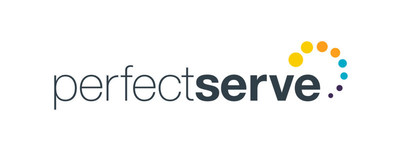New Study from PerfectServe: Emoji Trends in Clinical Communications

KNOXVILLE, Tenn., Feb. 22, 2022 /PRNewswire/ — PerfectServe®, a leading provider of cloud-based clinical collaboration and provider scheduling solutions, today published a report analyzing the use of emoji in clinical settings. “The Rise of Emoji in Healthcare Communication” is the first-ever study of emoji trends based on data from thousands of deidentified messages exchanged between clinicians in acute care settings around the United States. The report, available to the public for download today, reveals that emoji have a different—and more positive—function in medical environments compared to the way they’re used by the general public.
PerfectServe initially undertook this study to examine whether emoji exchanged by clinicians on its platform could be used as a proxy for clinician wellness during different stages of the COVID-19 pandemic. With an initial hypothesis that emoji might reveal greater frustration or stress over time, the data instead revealed that clinicians consistently use these miniature-but-expressive images to convey politeness and add human emotion to their interactions with colleagues.
“We work with brilliant and dedicated clinicians every day, and it’s an understatement to say that they take their jobs—which directly impact patients’ lives—very seriously,” said Kelly Conklin, MSN, CENP, Chief Clinical Officer for PerfectServe. “We’ve also witnessed how taxing the pandemic has been for folks on the front lines. It was refreshing, and even a bit endearing, to see that, during a period rife with unprecedented stressors and pressure points, clinicians are finding a way to make care team communication friendlier and more light-hearted using the almost-universal language of emoji.”
The subject of emoji in healthcare communication is still relatively unexplored, as many organizations haven’t yet implemented—or even considered—guidelines dictating appropriate usage for their team members. PerfectServe’s early look yielded some noteworthy findings:
- The thumbs up emoji was most frequently used across the board for all clinicians, perhaps demonstrating the desire for quick, easy ways to express acknowledgement.
- Looking at the top ten emoji used by clinicians versus the top ten emoji used in the general population, only one (face with tears of joy) appears on both lists. This stark difference shows both the uniqueness of professional clinical communications—generally more positive and less intense in tone—and potentially that clinicians are developing their own communication protocols using these shortcut tools.
- Internal medicine is the top specialty for emoji usage, racking up about 25% of total emoji captured in PerfectServe’s data. In total, internal medicine personnel used 143 distinct emoji. Second place on the list was orthopedics (15.7%), followed by physical medicine & rehab (12.1%).
- Practitioners—MD, DO, NP, and PA roles—sent more emoji in their communications than other care team members, including RN, CNA, MA, case manager, and administrator roles. This can almost certainly be attributed to the fact that practitioners still comprise the majority of smartphone users in clinical settings, although many organizations have begun (or are considering) equipping nurses with these devices to enable more efficient and effective patient care.
- Among medical-themed emoji, the face with medical mask showed up most frequently, followed by the microbe.
- The most popular time blocks for sending emoji are Thursday from 3 to 4 PM local time and Friday from 2 to 3 PM local time. In general, Thursdays and Fridays saw notably more emoji activity than other days of the week.
The research paints a broader picture of emoji used to convey politeness and positive intent without sacrificing professionalism. The data show care teams collaborating with smiling faces and the emoji equivalent of “please and thank you,” and rather than being specific to medicine, emoji were more commonly used to add positive emotional intent to messages. This suggests that emoji can be a tool for building camaraderie and lightening the emotional load in an environment that is frequently fast-paced and stressful.
To capture data for this report, the PerfectServe database team pulled a total of ten monthly messaging reports from high-volume facilities in five major geographical areas of the United States: Central, Northeast, West, Southwest, and East. PerfectServe’s in-house analyst then extracted Unicode emoji data, removed all other message contents to avoid sharing or consuming PHI, and added fields like specialty, user role, time of day, and platform type (iOS vs. Android, mobile vs. desktop) to uncover additional insights.
To download the full report, visit the PerfectServe website.
About PerfectServe
PerfectServe accelerates speed to care by optimizing provider schedules, streamlining clinical communication, and engaging patients and their families in the care experience. Our cloud-based software simplifies complex clinical workflows and schedules with secure and timely communication by dynamically routing messages to the right person at the right time. We drive more efficient care collaboration in all settings to improve patient outcomes and bring joy back to caregivers. PerfectServe has more than 20 years of experience and is a trusted partner to more than 500 hospitals and 30,000 medical practices.
PerfectServe Contact:
Matt Kothe | Corporate Communications Manager
865.776.9824
mkothe@perfectserve.com
Media Contact:
Ashley Greer | Media Relations, Uncommon Bold
ashley@uncommonbold.com
View original content to download multimedia:https://www.prnewswire.com/news-releases/new-study-from-perfectserve-emoji-trends-in-clinical-communications-301487052.html
SOURCE PerfectServe

